Mean Green Camouflage Machines: Green Insects that are Camouflage Experts
Mean Green Camouflage Machines: Green Insects that are Camouflage Experts
Happy St. Patrick’s Day!! We hope you have a fun day of wearing green and avoiding getting pinched by anyone who thinks that they’re funny. There are many insects who celebrate this holiday too, and they even go so far as to wear green every day. Some insects have the ability to camouflage themselves into their environment in order to avoid getting eaten or squished. Here is a look at some of the insects that show it actually might be easy being green.
Aphids
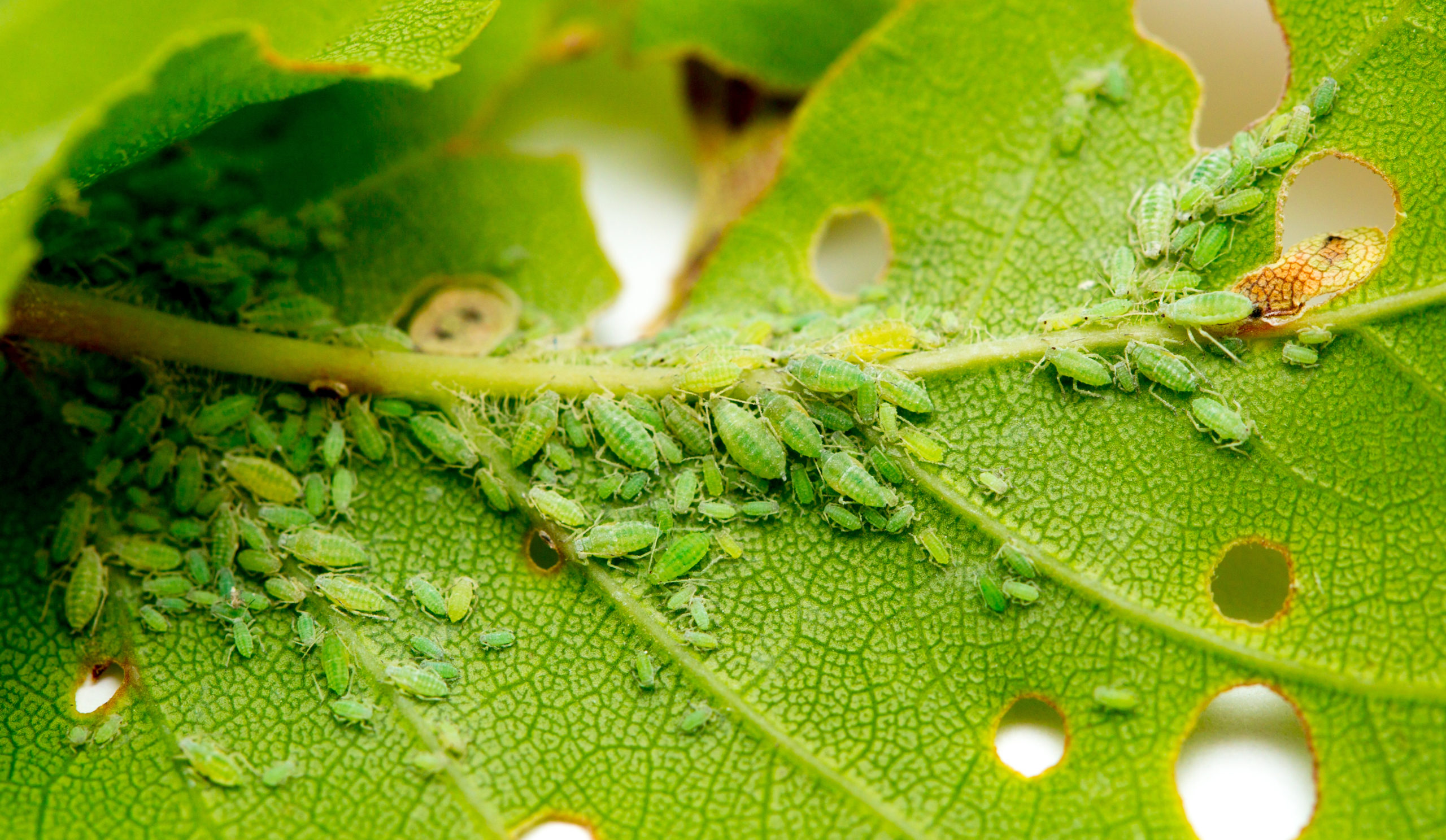
Some types of aphids are green all the time, so they don’t have to worry about changing colors in order to fit in. Aphids are a gardener’s worst nightmare due to their destructive love for all types of leaves and greenery. They get their food by sucking the nutrients out of the leaves, and too much focus on one leaf will cause it to wilt and fall off. Green aphids are also referred to as green flies when they have wings, which allows them to move from plant to plant much easier. They stay on the undersides of leaves, and this benefits them for a couple of reasons. They not only get more nutrients from the veins and stem of the plant, but it also gives them additional protection since they are not easily plucked off the top of a leaf. Since aphids are so small and usually have green bodies that are almost translucent, they are able to live longer and grow their population much easier through this built-in survival tactic.
Aphids are completely harmless to humans, but they are very dangerous to the health of your greenery. Two major signs that you have aphids are the sudden yellowing and wilting of otherwise healthy plants, and the remnants of yellow honeydew drops on leaves that aphids leave behind.
Grasshoppers
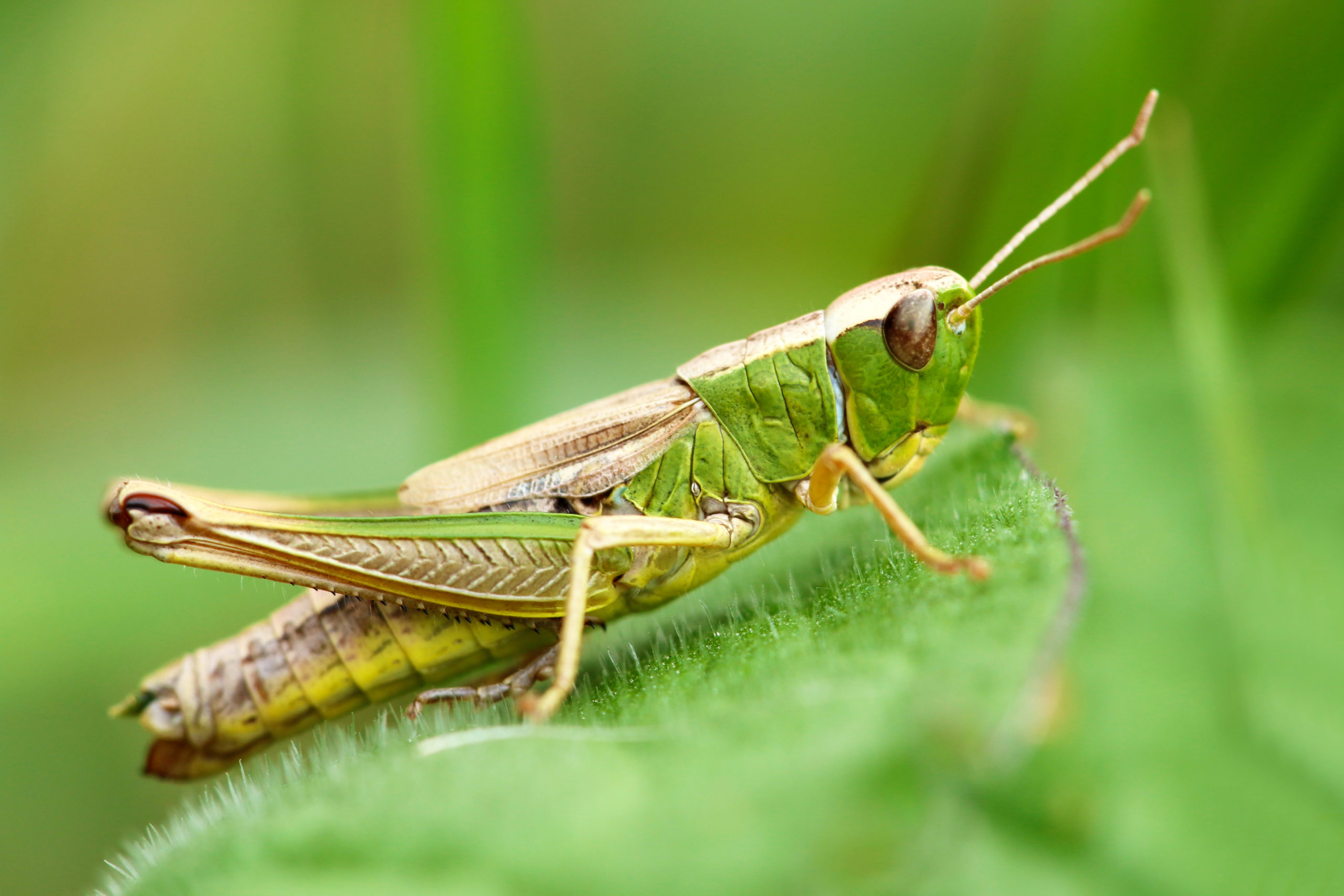
Much like some of the other insects on this list, the ideal camouflage of grasshoppers is in the name. Grasshoppers can be brown in color, especially when they turn into locusts, but they are mainly a bright green color that allows them to blend in with green grass. They completely disappear visibly when they’re in tall grass or under foliage. But they become very visible when they use their long legs to jump up to thirty inches in height. Unlike other green pests, grasshoppers can actually change their colors at will. Scientists have observed these insects changing their color from green to gray to brown in order to best match the substrate it is currently on. They also seem to choose the surface that contrasts with their natural colors the least, so they stick with what they can do. And since they are great at blending in with typical grass and foliage, in addition to those being their favorite foods, grasshoppers are usually found deep in the grass.
These insects are also not a danger to humans, but their damage to plants is noticeable when a lot of holes seem to suddenly show up in leaves. They can get away with eating plants for a while due to their ability to consciously camouflage at will, so it is helpful to keep an eye on all plants during grasshopper season, which tends to be late summer to early fall.
Green Stink Bugs
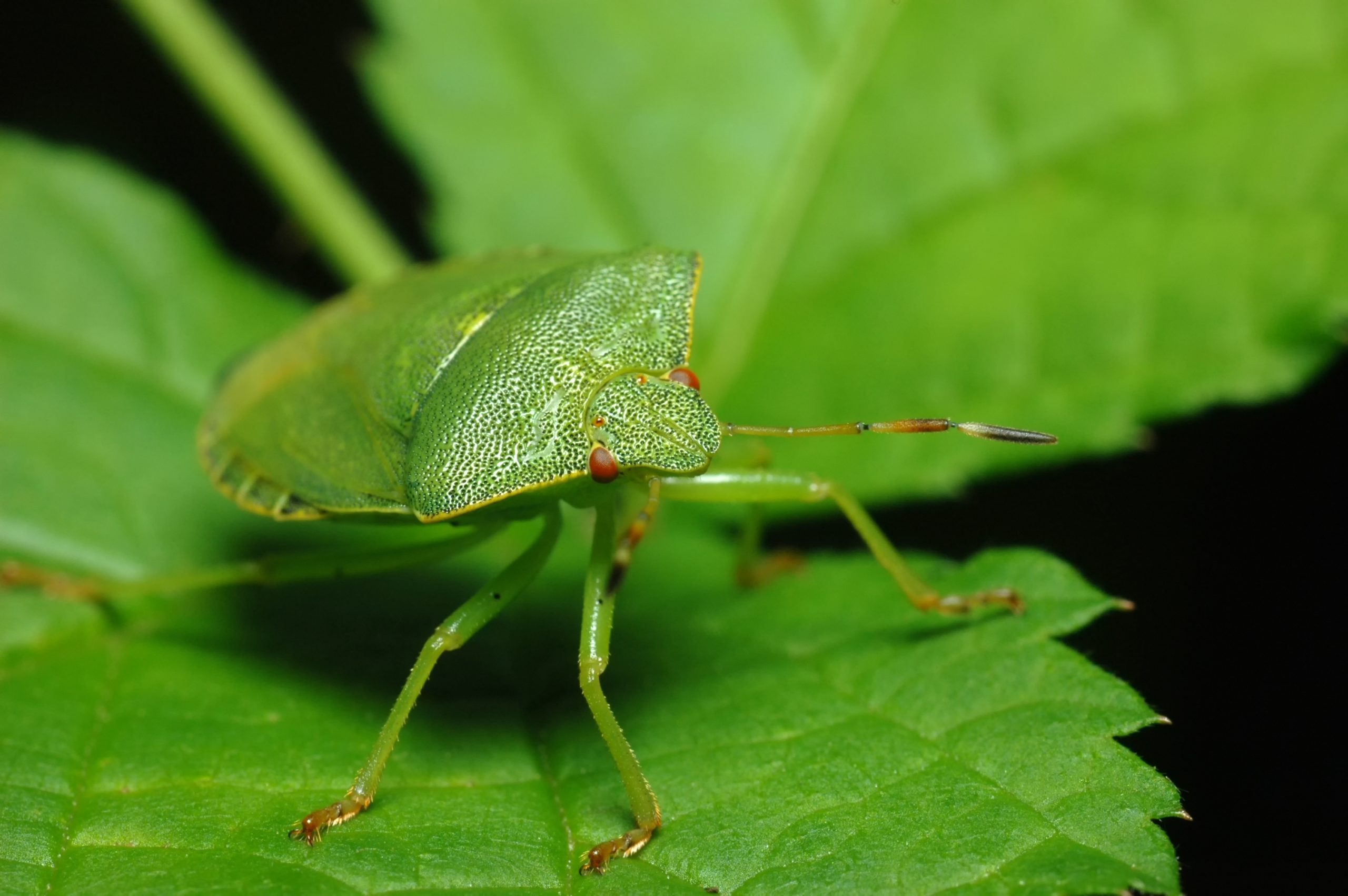
The average stink bug we easily find in our backyards tends to be the ugly brown color that helps them blend in with the dark mulch and bark of the yard. But green stink bugs can stay hidden within the foliage they gravitate towards. Also called the green soldier bug, these insects look like a bright green leaf constantly due to their natural green hue. They are extra-protected by the hard shell on their back that closely resembles a leaf and protects their two pairs of wings. Since they are naturally camouflaged with their favorite foods, green stink bugs can typically eat in peace as they enjoy vegetables, stems, fruits, and foliage. They cause more damage to fruits when they eat the fruit early in its development, since the insect will prevent it from growing to its full potential and ripeness.
Besides their green color, green stink bugs also get their name from their unpleasant odor that they release when threatened or disturbed. But when they are simply seen crawling on the ground, they look like any other beetle and don’t do much damage besides eating plants.
Green Butterflies

Tailed Jay Green Butterfly
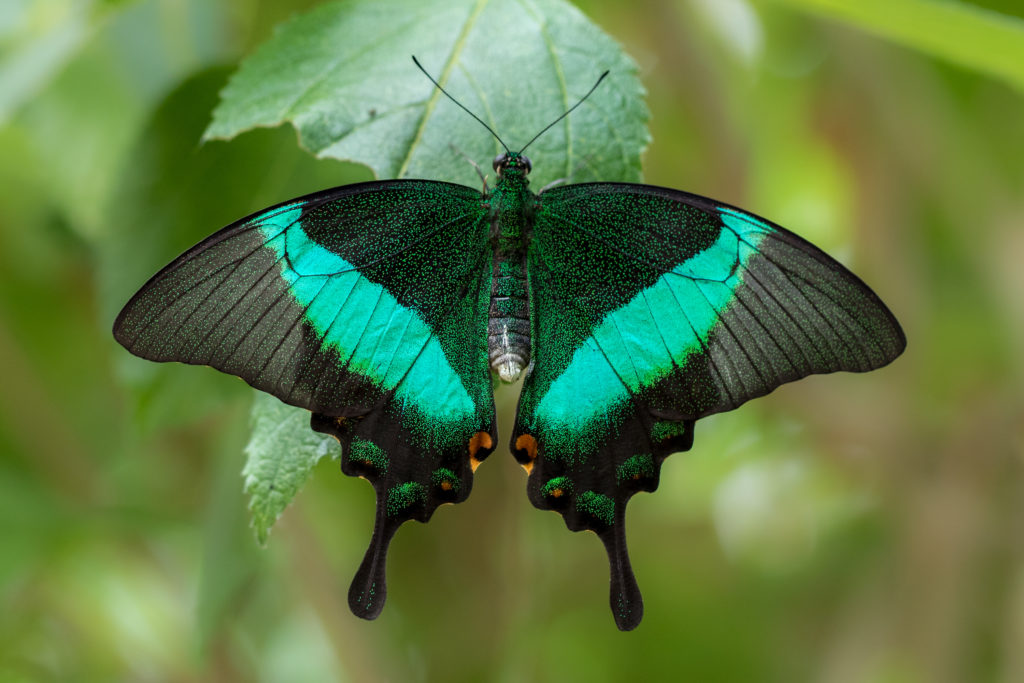
Emerald Swallowtail Butterfly
Butterflies are beautiful insects that come in all kinds of colors and patterns. They have four wings, three pairs of legs, and two antennae, but they are most known for their large wings. Butterflies have scales on the top and bottom of their wings, which helps them to blend in where they can. Some wings even seem to change color and vibrancy in flight due to the scales reflecting the light in different ways. Their main defense is crypsis, where the butterfly folds its wings to blend in with its environment. The fact that they rest with their wings up is different from many types of insects, and gives the butterflies an advantage in being prepared to fly away quickly when danger is near.
Two green types of butterflies are the tailed jay green butterfly and the emerald swallowtail butterfly. The tailed jay green has green dots and blotches all over its otherwise black wings. The emerald swallowtail has black wings with a green luminous stripe across. The green coloring is from the wings soaking up the red and blue wavelengths of light. Both butterflies can use their black and green coloring to their advantage since they can blend in with the shadows and undersides of plants.
Praying Mantis
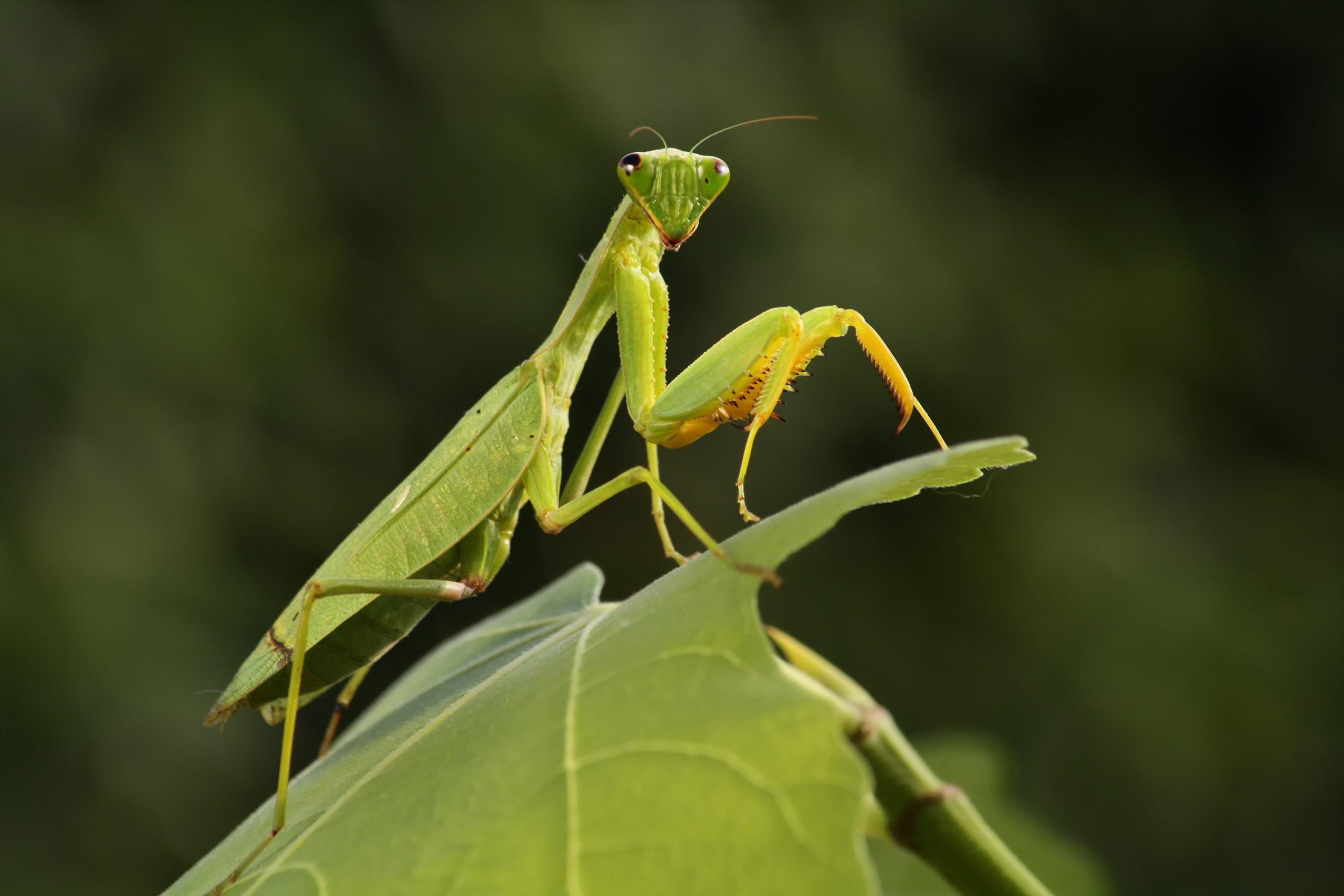
The praying mantis (or mantid) is a large green insect that looks scary by its size and large forelegs, but it doesn’t want anything to do with humans. It has a triangular head, antennae, and large forelegs with sharp “spikes” that they use to impale and capture their prey. These carnivorous insects are known as ambush insects, in that they wait for other insects to fly or crawl by before they attack. The bright green color of the mantis allows it to blend in almost completely with a healthy plant, giving it plenty of opportunity to find many delicious insects. It mainly likes to hide in foliage or on top of the grass, so it has a wide range of meals to choose from. The mantis may change its shade slightly to blend in with its surroundings, but it is usually seen in its bright green hue that resembles a plant in the better part of spring.
The praying mantis is actually a helpful insect, as it eats all of the typical crop-eating and pesky insects. They eat everything from crickets to moths to grasshoppers. Since they don’t eat plants, praying mantids are quite a beneficial insect that uses the fact that it looks like an action figure of a bug to its advantage.
Katydids
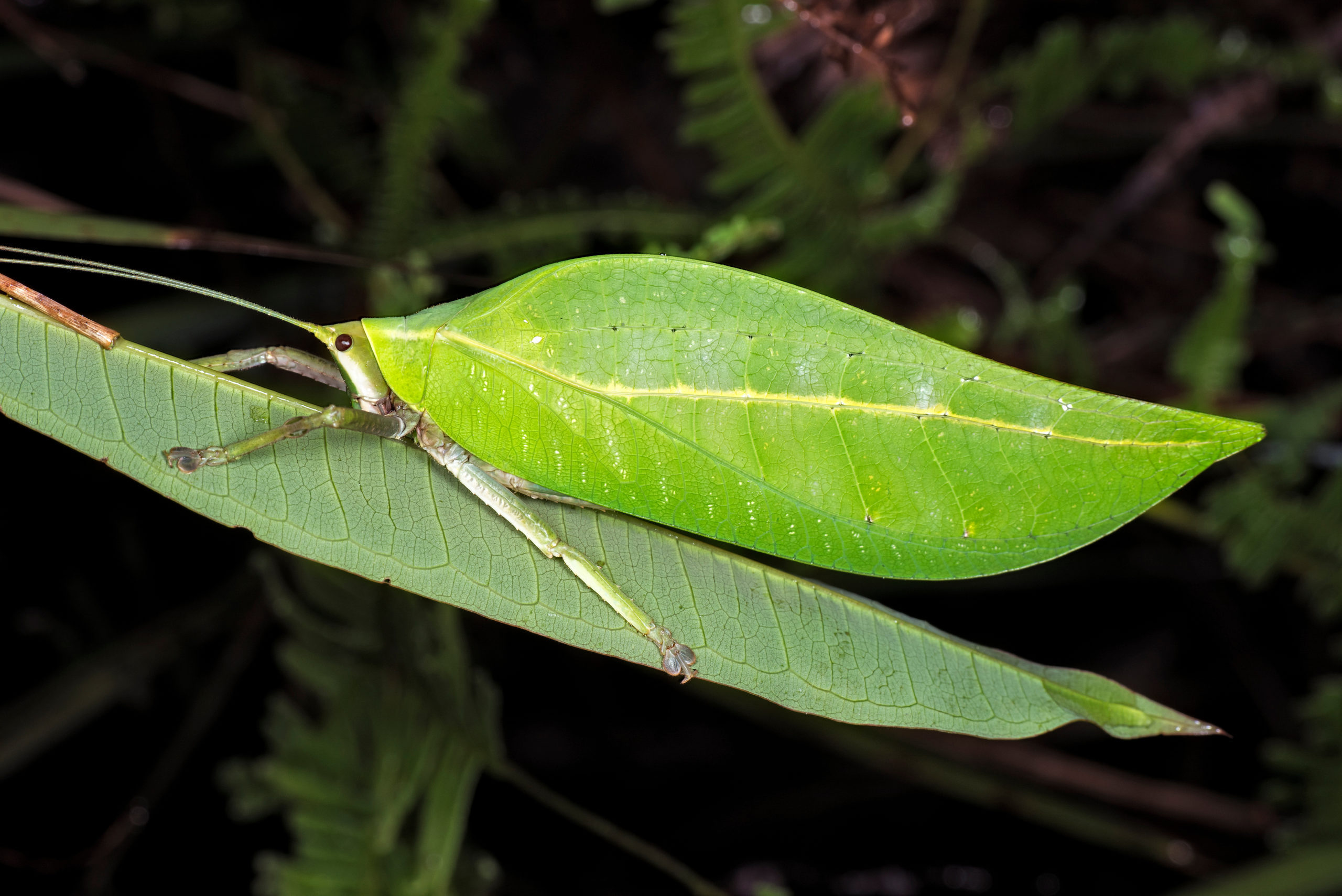
If you have ever seen a small leaf that is slightly moving in a way that would be strange for a leaf, it is likely a katydid. These interesting insects look like a green shiny leaf, which helps them for obvious reasons. They can blend in with just about any foliage and group of leaves, since any ignorant bug will be none the wiser to its presence. Katydid nymphs also blend in, just in different ways due to their small size. The nymphs can look like other natural organisms, like spiders and flowers. The katydid has very long antennae and likes to hop around as it looks for meals. It also makes a chirping sound, like a cricket, in order to either attract or warn other insects, depending on the situation.
Katydids can be harmful to gardens since they love leaves, but they also enjoy eating other small pests that eat plants. These include aphids, thrips, and spider mites. Katydids are fascinating since they closely resemble an ordinary leaf, but they are not as friendly to plants as actual leaves are.
Green Caterpillars
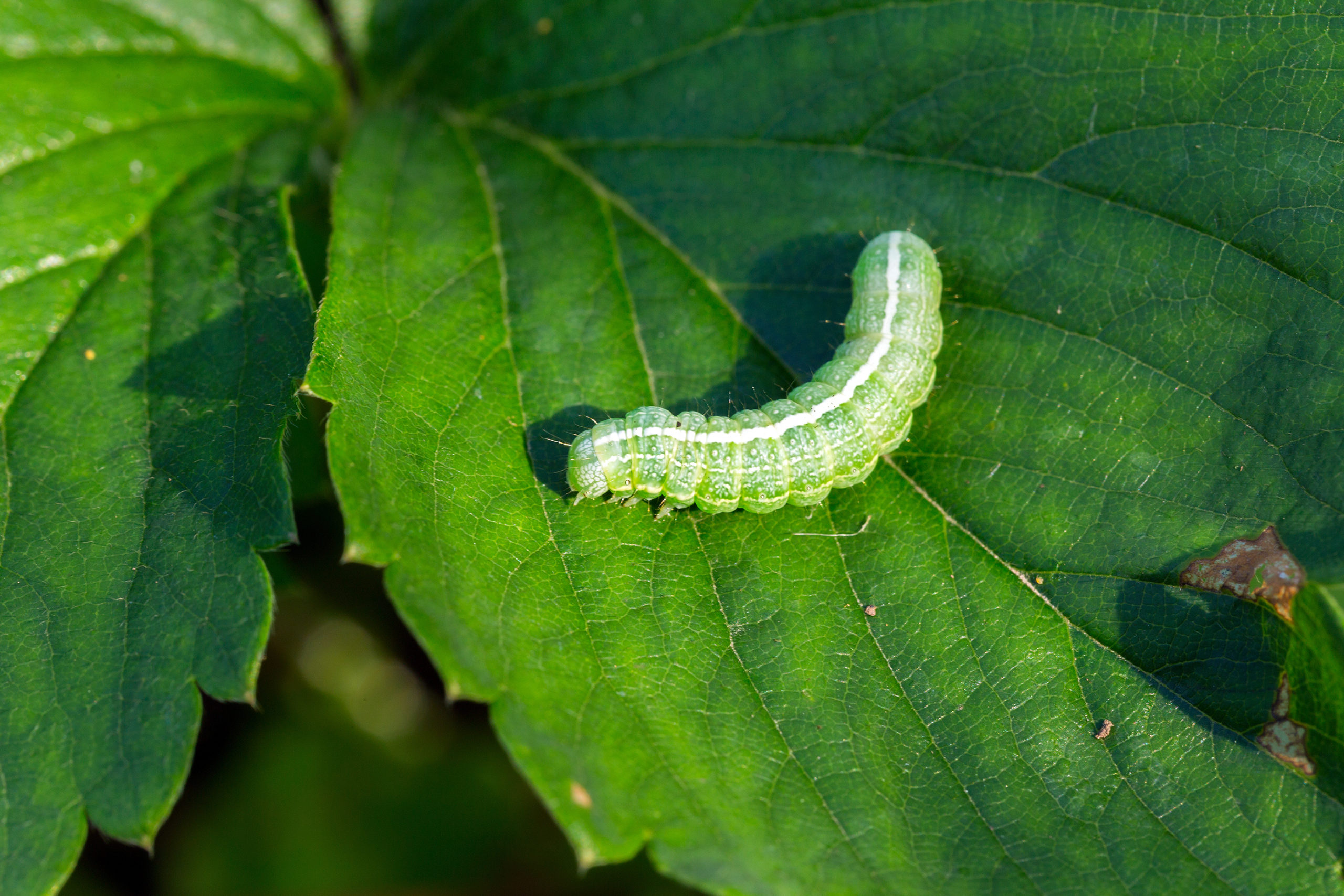
The caterpillar is a younger stage of the butterfly or moth, and they are also able to blend in with their surroundings quite easily. There are a couple different types of caterpillars that blend in with the greenery. One has long, bright green bodies that are covered in markings and are spiny. Since these are smaller, they are able to hide more easily under foliage. The other type of green caterpillar is much plumper, and has a segmented, lime-green body. Think of Heimlich from A Bug’s Life with this one. But both caterpillars are able to blend in quite easily with greenery due to their flexible bodies and varying shades of green.
Caterpillars eat leaves, so they could be considered pests if they eat enough of your plants. But since some of them will later turn in to butterflies, it is up to you to determine if they are worth getting rid of before they transition into their most beautiful form. They are also quite small, so it is difficult to find them when you are looking at your plants.
Green June Beetles

There are many green beetles in existence, and the green June beetle is one of the more visually appealing options. This arthropod is also referred to as the June bug, and is distinguishable due to its metallic green and bronze shades. The underside of its wings are bright green, so they can blend in with plants even in flight. It is most easily camouflaged with stems, foliage, and stems. Its shine makes the bug obviously different from the natural leaves, but it can blend in to the foliage for bugs who have worse eyesight. This beetle is special due to its coloring, but it is a notorious pest for those with fruit trees.
Green June beetles are attracted to mushy, overripe fruits, which is why they are often found in the fruit trees and orchards. They eat any kind of soft fruit, including apples, pears, plums, blackberries, and peaches. The fruit June beetles eat is left with irregular bites and a bad taste in our mouths when we eat the fruit. They are known to consume whole fruits when enough of the beetles are on one piece of fruit. The grubs of June bugs are even more harmful, believe it or not. They may be pretty to look at, but green June beetles are definitely not a sight you want when you are caring for your fruit trees.
Pest Control
While not every insect on this list is a pest (please don’t harm butterflies!), any unwanted insect invasions in the home or yard is not the best way to celebrate this holiday. Give us a call if you want to learn more about your options for pest control for any type of pest. Your biggest concern on St. Patrick’s Day should be how much corned beef and cabbage to eat, not seeing unwanted pests in your home.
Citations
Baker, J. (2021, July 15). Green June beetle in the landscape. NC State Extension. Available at https://content.ces.ncsu.edu/green-june-beetle-1 (Accessed on March 11, 2022).
Butterfly defense mechanisms. (n.d.). American Museum of Natural History. Retrieved on March 11, 2022, from https://www.amnh.org/exhibitions/butterflies/defense
How do butterflies use their wing colors? (n.d.). Reiman Gardens. Retrieved on March 11, 2022, from https://www.reimangardens.com/butterfly/butterflies-use-wing-colors/
Types of green insects with pictures and names – Identification guide. (n.d.). Leafy Place. Retrieved on March 11, 2022, from https://leafyplace.com/green-insects/
Universidad Pablo de Olavide UPO. (2020, May 21). Grasshoppers are perfectly aware of their own coloration when trying to camouflage. Phys Org. Available at https://phys.org/news/2020-05-grasshoppers-perfectly-aware-camouflage.html (Accessed on March 11, 2022).
Waleed. (n.d.). Praying mantis camouflage – How do praying mantis protect themselves?. Praying Mantis. Available at https://praying-mantis.org/praying-mantis-camouflage/ (Accessed on March 11, 2022).

